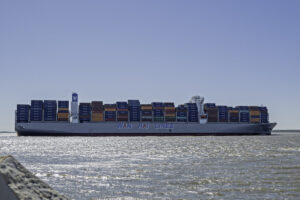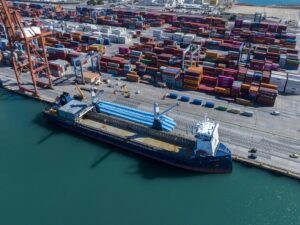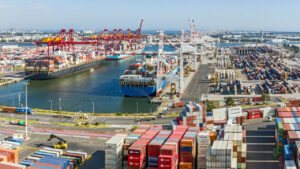After a slow start, scrapping of containerships gathered momentum towards the end of 2015 and has continued into 2016, according to the latest Container Insight Report released by Drewry.
This follows news that the cellular container ship growth had outpaced world port throughput and is approaching a total of 20 million TEU of capacity.
A record intake of new-build containershps (1.7 million TEU) in 2015 coincided with an unusually low scrapping total, serving to widen the supply and demand gap that is assisting the erosion of carrier profits.
The amount of scrapping halved in 2015 with only around 195,000 TEU worth of capacity removed from the world’s cellular fleet, well down on the previous three years from 2012 to 2014 when the annual scrapping totals averaged nearly twice as much.
In 2015, owners of older scrapping candidate ships preferred to extend their lifecycles because demolition prices were less attractive and because there was some renewed demand for Panamax ships, either for second-hand sale or time-charter as a consequence of a spurt of new regional services in the early months of the year, particularly in Intra Asia, and to cover the US West Coast port dispute.
However, as reported in Drewry’s latest Container Forecaster, the level of scrapping escalated in the final months of last year as demand for Panamax ships waned and charter rates dived.
Demolition prices remain unattractively low but many owners, particularly of the non-operating kind; have decided that with charter rates falling they are better off recouping some residual value from their assets from the scrap market.
Technical Paper: Huge Overcapacity: In Absence of Demand
December was the peak month for scrapping in 2015 when a rush of activity resulted in 15 vessels (predominately owned by independents) contributed around one-quarter of the year’s scrapping total.
Available data for 2016 shows that another 19 ships (58,000 TEU) were demolished in January and February of 2016.
Of this year’s units to be sent to the ship graveyard, 12 were under 20 years of age and nine had capacities of at least 4,000 TEU, suggesting that more ships are coming onto the scrapping radar.
This trend looks to be continuing as more recently it has been reported that Zodiac Maritime has scrapped a couple of 6,000 TEU units for around US$290 per ldt in Bangladesh, representing around a 10% premium on recent demolition prices.
Drewry believe that 2015 was something of an anomaly and with demolition prices starting to pick up, combined with the general need to weed out unwanted capacity, it expects the recent trend to reassert itself in 2016 and 2017 and for scrapping totals to be more like they were in the years 2012-14.
Scrapping alone does very little to redress the supply-demand imbalance – last year’s scrapping total was equivalent to just 1% of the cellular fleet – but it does at least increase carriers’ ability to cascade smaller East-West operated ships into North-South trades by clearing space for them.
The Drewry View: Despite the low (but rising) demolition prices on offer, scrapping will intensify in 2016 as charter market demand for Panamax ships will remain muted.







